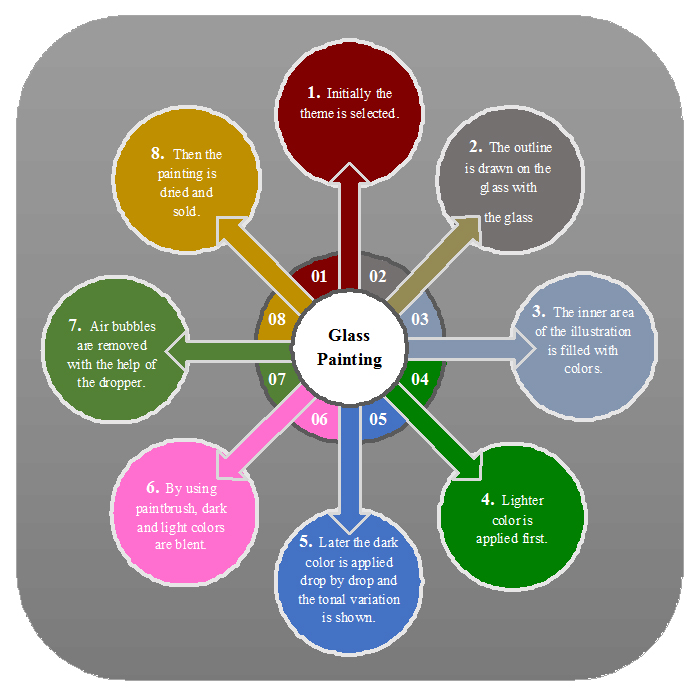Design Resource
Glass Painting - Tripunithura, Kerala
Visual Art
by
Glass painting is a notable art form. The process of glass painting requires immense patience and determination from the artist’s end. Highly skilled artisans who handle bold and confident strokes execute the paintings. The artisan named Bindu from Tripunithura, Kerala is one of the feminist artists. She tends to express herself and her thoughts through her works. Basically in her works, she gives prominence in narrating the emotions and bondages of women’s life. She is been practicing this art since 2007. She has also exhibited her paintings in Durbar hall located at Ernakulam.
Glass painting as the name indicates, the painting is done on the clear glass. Artist initially thinks about the theme for the illustration that needs to be made on glass. Once the theme and the coloring materials are ready, the artisan draws the outline on the glass, boldly, with the tube of water based glass color, according to the desired sense. While outlining the sketch the color tube is gently pressed so that the even stream of color is flowed smoothly and uniformly. The pressure applied on the color tube should also be held uniformly until the sketch is complete. The tip of the color tube is cleaned after applying every single line to maintain the neat sketch. Later the inside area of the outlines are filled with the desired colors with many different shades by adding dark and light colors. The first shade of color is usually the lighter one that is applied. Later the dark colors are applied drop by drop to show the tonal variations of the painting. And then the light and the dark colors are blend nicely with the help of the painting brush. Air bubbles are removed with the help of the dropper and the painting is kept for drying. Thus once the painting is dried it is appropriate for the usage.
The same technique is also used for painting on OHP sheets and acrylic sheets by the artisan of Tripunithura.












